Pickleball Doubles Strategies: Top Tips for Winning
Doubles play in pickleball is a fascinating domain where teamwork and strategic coordination reign supreme. When delving into advanced strategies and refined tactics tailored specifically for doubles, the difference between a nail-biting victory and a crushing defeat often lies in the tiny details and understanding nuanced complexities. In this article, we will unravel advanced techniques and collaborative strategies essential for intermediate to advanced players to enhance their doubles gameplay and stay a step ahead of the competition.
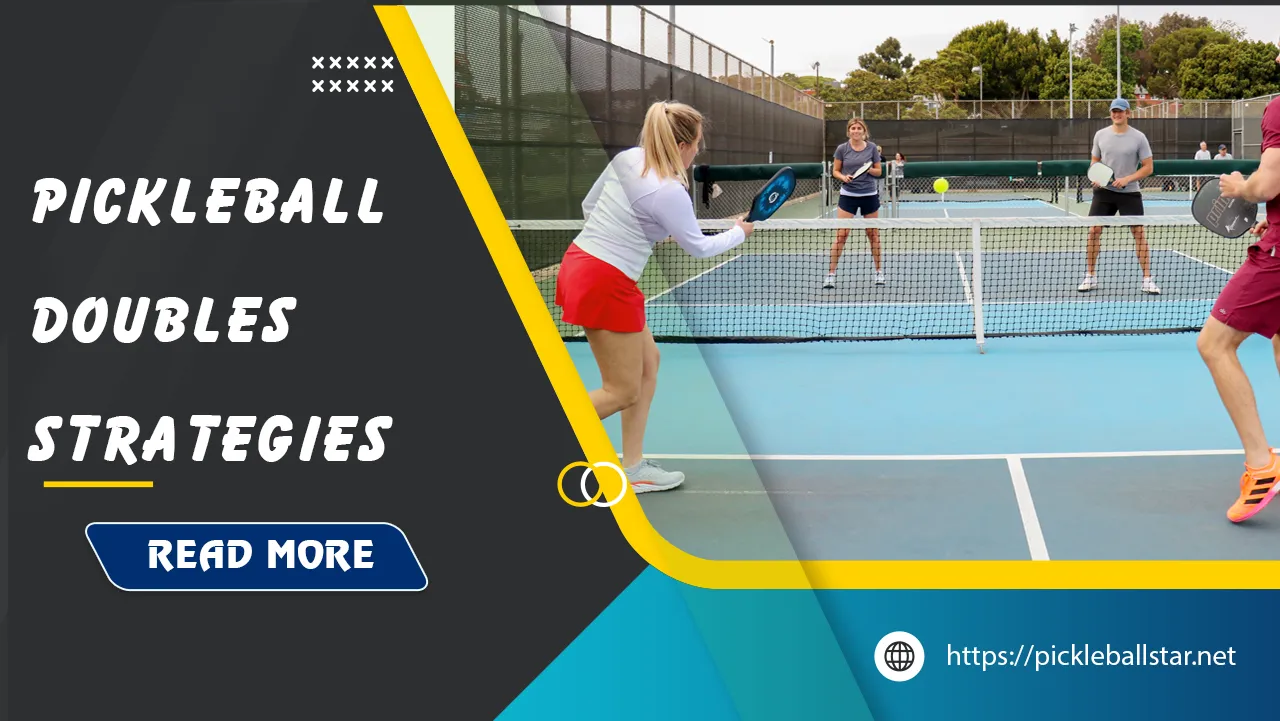
Communication: The Cornerstone of Doubles Success
Clear Communication
Communication in doubles pickleball isn’t just important; it’s often the key to success. Think of your communication as the central nervous system of your doubles team. Just as neurons constantly share information to keep the body functioning, you and your partner must maintain an open line of dialogue to navigate the game successfully.
- On-Court Calls: Use simple, clear calls for key actions like “mine” or “yours.” This helps to avoid unnecessary confusion and errors, which could otherwise easily cost you the game.
- Between Points: Discuss strategies for the next point between serves, such as potential areas to target or specific shots to avoid, keeping each other on the same page.
- Consistent Terminology: Employ consistent terms for various shots and positions. This unified “language” supports immediate comprehension, reducing reaction time.
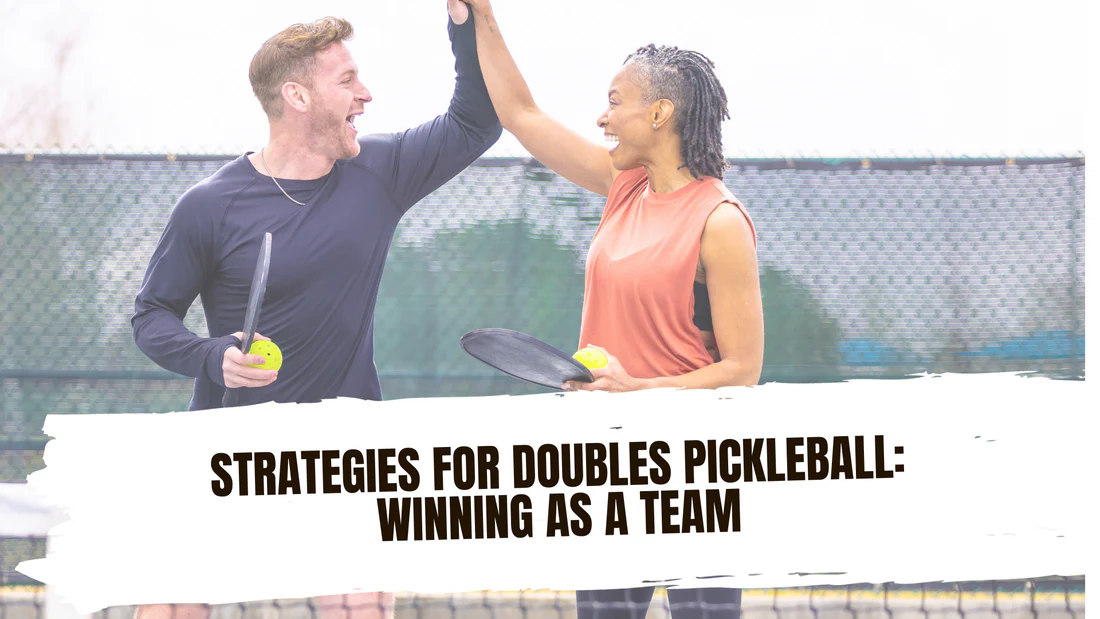
Developing Signals
In the symphony of a fast-paced pickleball game, verbal communication won’t always be reliable. That’s where hand signals and non-verbal cues come into play, reminiscent of a complex dance where each move is precisely timed and understood without the need for words.
- Pre-Game Planning: Establish a set of hand signals pre-game to indicate strategies like poaching, fake dinks, or planned returns. This foresight enables swift, covert communication.
- Visual Cues: Apart from pre-set signals, develop visual cues such as a slight nod or a shoulder tilt to communicate unplanned needs or adjustments.
Active Listening
Active listening might sound obvious, but it’s more challenging than you think, especially in an exhilarating match. Imagine a conductor silently instructing an orchestra; each player must be attuned to every nuanced gesture.
- Focus on Your Partner’s Body Language: Being attuned to your partner’s body language can be crucial. A change in posture might signal readiness to poach or a shift in strategy, equivalent to a silent ‘heads up.’
- Follow Verbal Cues: When your partner calls out a play, make it a priority to enforce what’s said. This alignment creates a precise, coordinated front, much like the synchronized maneuvers of a well-trained drill team.
Positioning and Coverage: A Unified Front
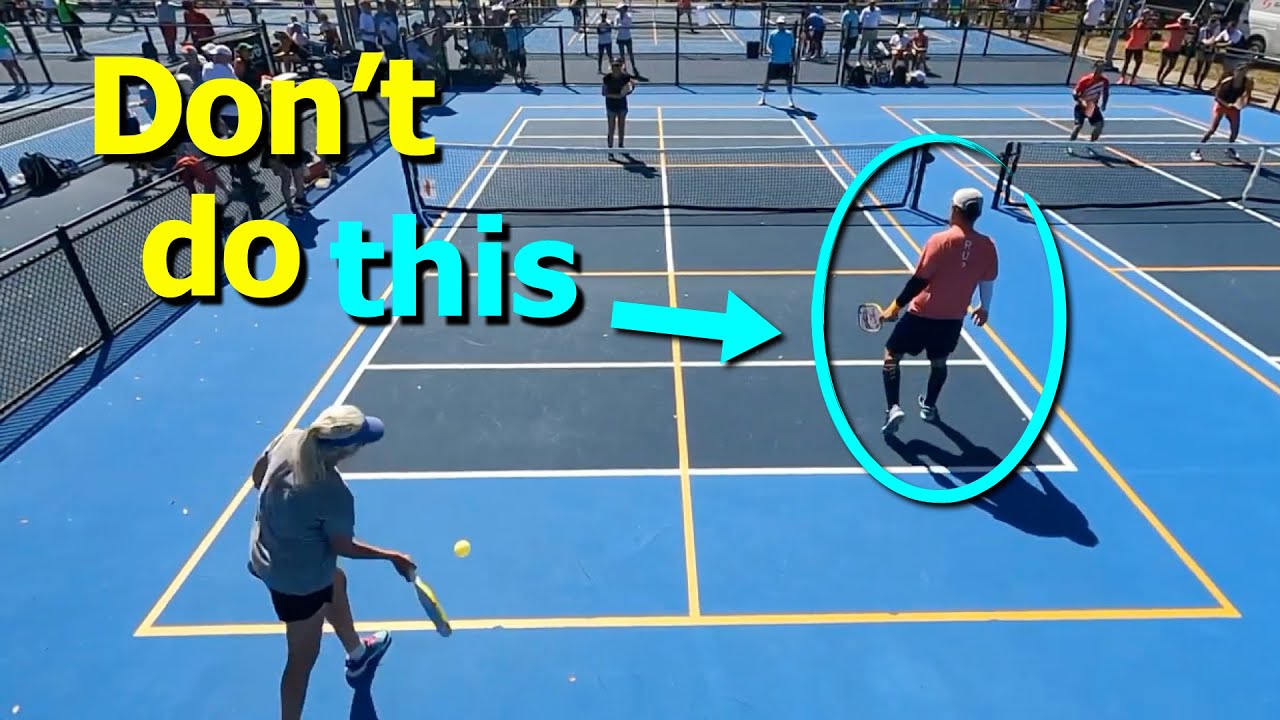
Strategic Court Coverage
Strategic positioning is akin to a game of chess; it’s about anticipating moves and covering all essential spaces with efficiency and foresight. An optimal configuration maximizes your reach while minimizing weak spots.
- Straight Up and Diagonal Coverage: Keep one player up front and one in the middle or back, allowing for seamless transitions and an impenetrable defense.
- Shifting Based on Opponent’s Play: Adjust your positioning based on the opponent’s weakness. If they struggle with drop shots, push forward collectively to pressurize.
The Power of the Poach
The poach resembles a knight in chess jumping unpredictably across the board, disrupting the opponent’s strategy. Executed well, it’s a game-changer.
- Identify Opportunities: Look for signs your partner might miss such as an opponent’s weak return or an overly aggressive approach and capitalize with a quick intercept.
- Execute Seamlessly: Make your move without hesitation, coordinating visually or through a pre-agreed hand signal.
Role Shifting
In the dynamic realm of pickleball, flexibility and adaptability define the champions. Role-shifting ensures you’re leveraging the strengths of both players, adapting swiftly as situations evolve.
- Fluid Dynamics: Rotate roles based on the unfolding play. For instance, smoothly transitioning from a defensive posture to an offensive stance if your opponent hits a high, weak return.
- Supporting Your Partner: Be ready to cover for your partner if they’re pulled wide or forced into a vulnerable position. This mutual support creates an unyielding team dynamic.
Serving and Returning Strategies
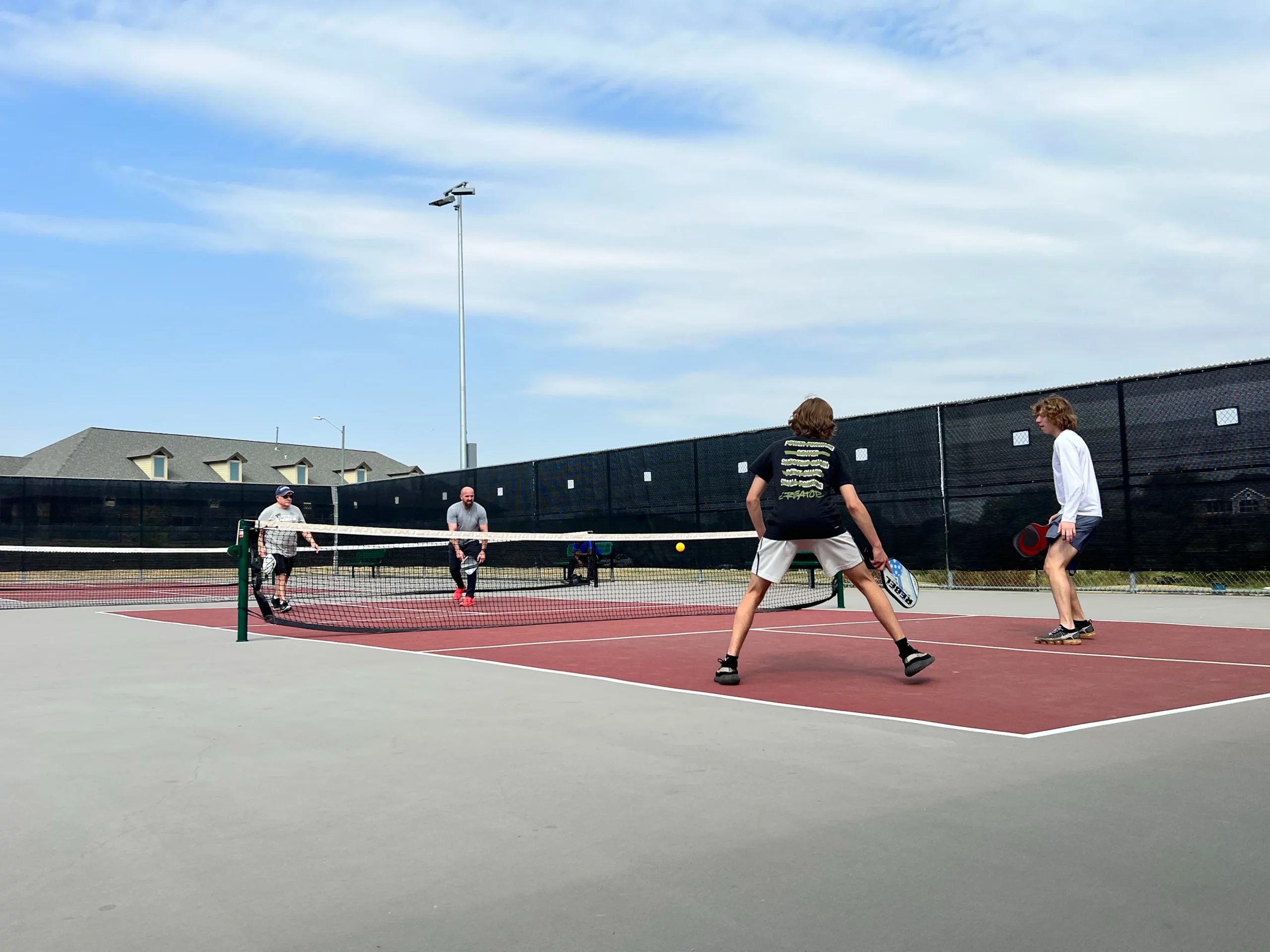
Strategic Serves
A strong, strategic serve is the spearhead of your attack, striking the opponent’s defenses right where it hurts.
- Varying Serve Types: Alternate between deep serves, short serves, and spin serves to keep your opponents unsettled, much like a pitcher mixing up fastballs and curveballs.
- Target Weaknesses: Identify and exploit the opposing team’s weaker player with targeted serves, pressing them into making high-risk returns.
Returning Serves Effectively
Mastering the return of serve is pivotal, much like a counterstrike in a fencing duel, setting up the next series of plays with precision and foresight.
- Controlled Returns: Aim for controlled, low returns to minimize your opponents’ attacking options. A well-placed return can often neutralize the advantage of even the strongest serve.
- Positioning for Returns: Adequate spacing and positioning ensure each return is met with anticipation and control, allowing your team to take immediate command of the point.
Advanced Doubles Tactics and Techniques
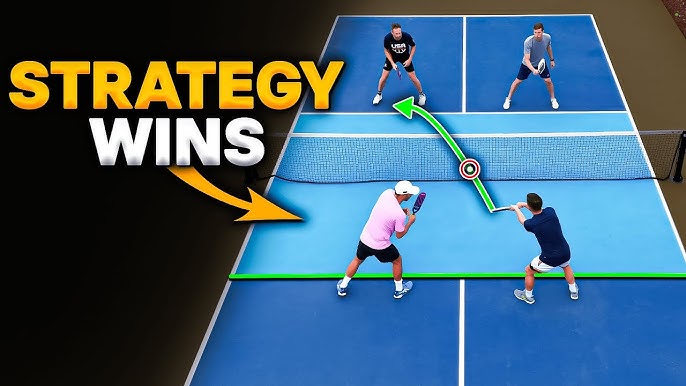
The Third Shot Drop in Doubles
The third shot drop is one of the most critical shots in pickleball doubles, akin to a chess player’s pivotal move that dictates the tone of the game.
- Precision is Key: Execute with finesse, ensuring the ball nestles just over the net. This controlled execution demands practice but reaps significant rewards.
- Strategic Timing: Use it judiciously to transition from a defensive to offensive stance, disarming the opponent.
The Fake Dink in Doubles
Using deception is a strategic mastery, comparable to a magician’s sleight of hand, diverting attention and creating openings.
- Subtle Execution: Slightly alter grip or body positioning to hint at a dink but follow through with a drive or an unexpected placement.
- Mentally Prepare Opponents: Execute regular dinks to cue your opponents into pattern recognition, making that one deceptive shot a real game changer.
The Power of the Soft Dink
The soft dink isn’t merely a defensive tactic. It’s an art form, a pickleball strategy laced with subtlety and control to orchestrate the game’s rhythm.
- Precision Placement: Keep dinks low and controlled, placing them precisely to force the opponent into awkward positions.
- Building Pressure: Rather than going for immediate winners, use soft dinks to corral your opponents, setting up high-percentage put-away opportunities.
Read more: Pickleball strategy for beginners
FAQs
What are the most important communication skills for doubles play?
- Clear, concise verbal cues during play for quick decision-making.
- Using consistent terminology and specific calls to reduce confusion.
- Pre-determined hand signals for non-verbal communication.
- Being attuned to each other’s body language and movement.
How can we develop a system of signals for effective court coverage?
- Pre-match planning sessions to agree on specific hand signals.
- Using visual cues like head nods or shoulder tilts.
- Consistent practice to ingrain these signals into your routine.
When should we poach in a doubles match and how can we execute it successfully?
- Poaching effectively when spotting weak returns or predictable patterns.
- Using signals or silent communication to coordinate.
- Executing swiftly without hesitation to catch opponents off-guard.
How can we master the art of the third shot drop in doubles?
- Consistent practice to enhance precision.
- Understanding when to use it to shift from defense to offense.
- Combining it with movement to follow through on control.
What are some effective soft dink strategies for doubles play?
- Placing dinks to move opponents out of position.
- Using dinks to set up offensive opportunities.
- Varying speed and placement to keep the opponent unsettled.
Read more: Mastering Pickleball Singles Strategies for Dominating the Court Solo
Conclusion
Mastering pickleball doubles strategies requires more than just physical skill; it demands mental acuity, seamless communication, and strategic foresight. From refining communication to mastering positioning, serves, returns, and executing sophisticated techniques like the third shot drop and soft dink, every element weaves into a cohesive, lethal gameplay strategy.
As you continue your journey in pickleball, remember to practice tirelessly, communicate openly, and experiment courageously with new strategies. The court isn’t just a battleground; it’s an arena for synchronized artistry and cooperative dominance. Embrace these insights, and take charge of your doubles play, turning every game into a testament of strategic mastery and unbreakable teamwork.
